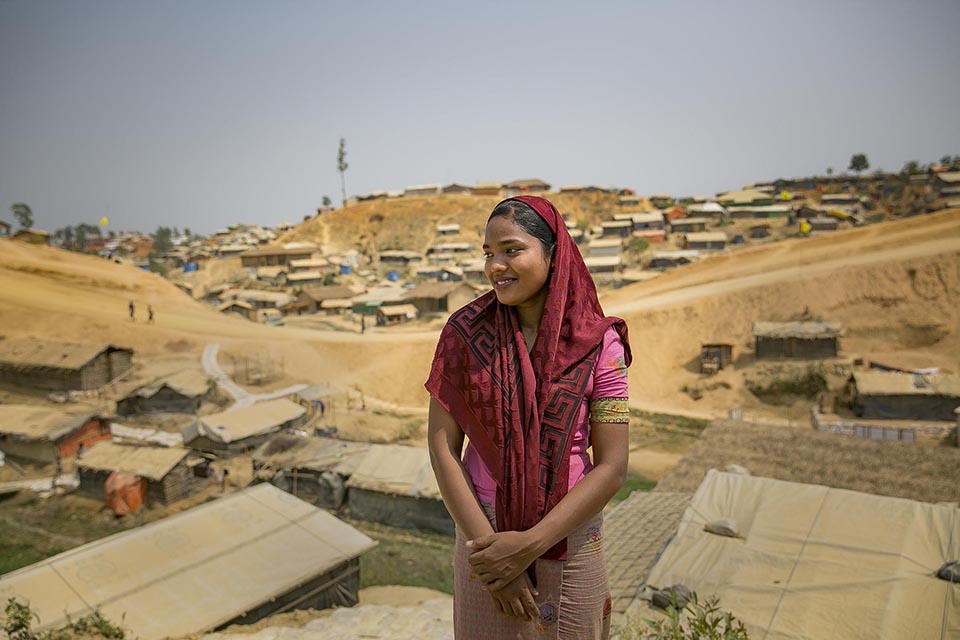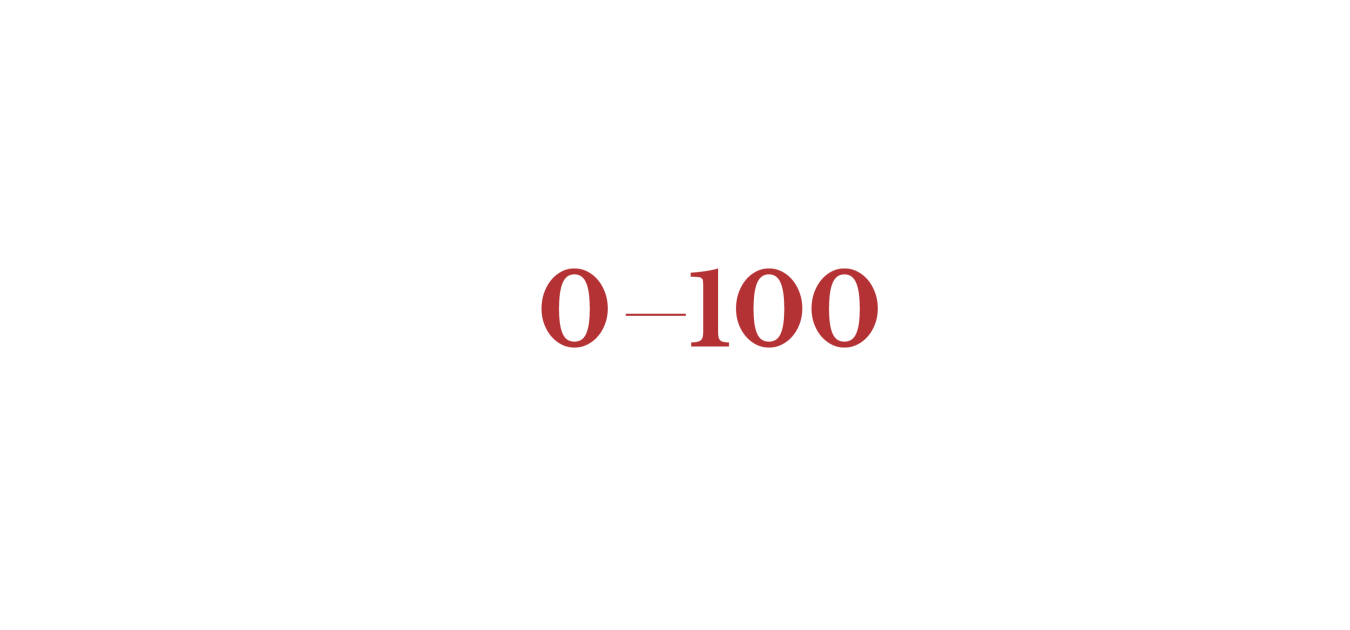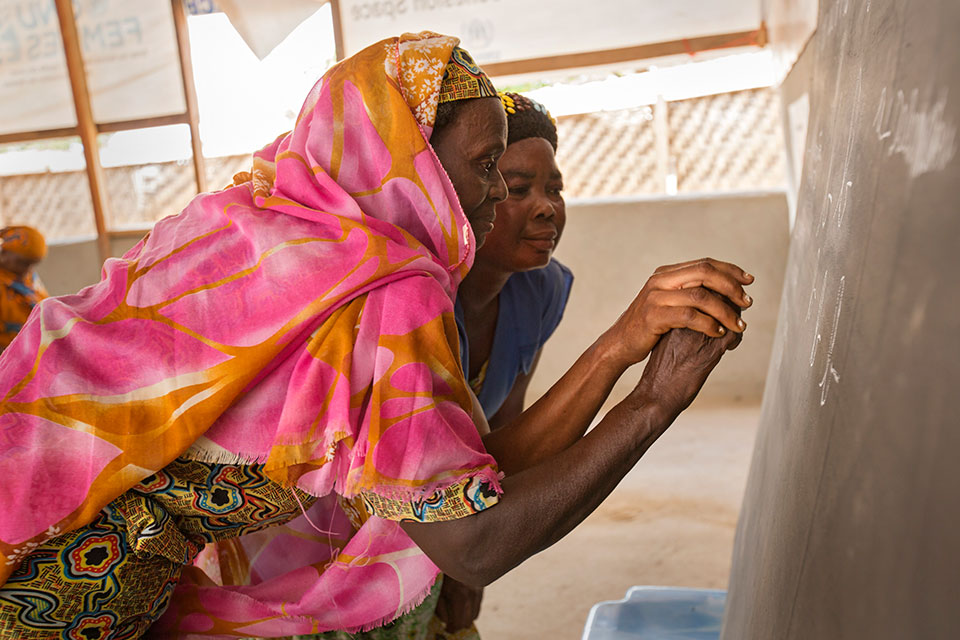Facts and figures: Humanitarian action
Conflict
- 125 million people were in need of humanitarian assistance in 2015 [1].
- Conflict affects women, girls, boys and men differently. Women and girls face heightened risks due to displacement and the breakdown of normal protection structures and support. They also face increased care-related tasks such as providing food and water, and caring for the sick [2].
- Approximately 35 per cent of women worldwide have experienced physical or sexual violence, and gender-based violence increases in conflict settings [3]. More than 70 per cent of women have experienced gender-based violence in some crisis settings [4].
- During 2015, approximately 65 million people were forcibly displaced worldwide as a result of violence and persecution [4]. Further, an estimated 89 million people were affected by natural disasters [5].
- As of February 2017, 6.5 million Syrian people were displaced within the country [6] and more than 4.9 million people were living as refugees in neighbouring countries [7]. Approximately half of these refugees were women [8]. Agricultural trade and the informal economy are often the most impacted by crises. As women are over-represented in these industries, they are more likely to suffer economic losses. Further, women work longer hours than men, limiting their ability to participate in community decision-making meetings for humanitarian response [9].
- Less than 1 per cent of landholders in Yemen are women, although women make up 60 per cent of the labour force in crop farming [10].
- A recent report found that more than a third of Syrian refugee women between the ages of 20 and 24 had been married before the age of 18 [11]. Child marriage rates are four times higher in Syria now than before the crisis [12]. Although child marriage has long been prevalent in Yemen, rates have increased from 32 per cent [13] to 52 per cent in recent years, as dowries have plummeted and families use early marriage as a coping mechanism [14].
- The life expectancy for Syrian women has declined from 75.9 to 55.7 years [15].
- All forms of violence against women increase during disasters and displacement [16]. Both women and men in Syria have reported increased violence within the home, due to external stressors [17].
- In conflict situations, there is a significant increase in female-headed households during and after conflict, and these are often the most impoverished. Some 39 per cent of Syrian households in Jordan are female-headed [18]. Income for female-headed households in Jordan can be up to one-third lower when compared to male-headed households [19].
- As with all humanitarian emergencies, women and girls are among the most vulnerable. Women and girls face a significantly increased risk for unwanted pregnancy, gender-based violence, STIs and maternal mortality [20]. 430,000 Syrian women, including refugees and those still in Syria, are pregnant and in need of maternal care [21].
- Sixty percent of preventable maternal mortality deaths take place in settings of conflict, displacement and natural disasters [22]. Every day, 507 women and adolescent girls die from pregnancy and childbirth complications in emergency settings [23].
- More than one-third (36 per cent) of children who are out of school globally live in war-affected countries. Adolescent girls in conflict zones are 90 per cent more likely to be out of school when compared to girls in other, conflict-free, countries [24]. Girls are often kept out of school due to concerns about safety [25].
Disasters
- Since 1970, the number of people exposed to floods and tropical cyclones has doubled and women and children face an overwhelming burden during and after the crises [26].
- Through changing temperatures, precipitation and sea level rises, among other factors, global climate change is already modifying hazard levels and exacerbating disaster risks. UNISDR assessed that from 2005 to 2015, 87 per cent of disasters have been climate related [27].
- Women and girls are disproportionately exposed to risk, increased loss of livelihoods, security, and even lives, during and in the aftermath of disasters. During monsoon season in Bangladesh, women and girls are disproportionately affected by flooding as many cannot swim or are unable to leave their homes due to cultural barriers [28].
- Data gaps continue to impede proper understanding of, and prevention and response to the impact of disasters on women and girls as opposed to men and boys. Nonetheless, research has found that:
- Disasters such as droughts, floods and storms kill more women than men due to structural gender inequalities [29].
- During droughts, girls are more likely to miss school as they are needed to collect water and care for family members [30]. Droughts and prolonged dry spells also lead to an increase in harmful practices against women such as domestic violence, child marriage, courtship rape and female genital mutilation [31]. Women and girls must travel longer distances to collect water, increasing their risk for sexual assault [32].
- In one province in Indonesia, more than 70 per cent of people who died in the 2004 Asian tsunami were women [33].
- Hurricane Katrina, which struck New Orleans, USA in 2005, predominantly affected African American women—already the region’s poorest, most marginalized community [34].
- An estimated 87 per cent of unmarried women and 100 per cent of married women lost their main source of income when Cyclone Nargis hit the Ayeyarwaddy Delta in Myanmar in 2008 [35].
- After the 2015 earthquake in Nepal, UNFPA estimated that 2 million women and girls of reproductive age had been affected by the crisis, including approximately 126,000 pregnant women. With disruption to normal health services, the Population Fund estimated that 1,500 women per month would have difficulty accessing reproductive health services and consequently face life-threatening complications. [36].
- Studies have found that due to women’s roles as care-givers, during natural disasters they are more likely to make sacrifices, such as eating less food, for the well-being of their families. They are also more at risk for economic vulnerability, as men often migrate because of natural disasters. This can lead to divorce, desertion, and polygamy. Child marriage often increases to mitigate this economic vulnerability for young girls [37].
- During natural disasters, the likelihood of rape, sexual exploitation and risky behaviour greatly increases the likelihood of unwanted pregnancies, sexually transmitted infections and complications regarding reproductive health [38].
- Disaster damage and loss assessments are seldom disaggregated by sex and are usually recorded in terms of productive resources, which tend to be owned by men. This leads to a substantial undervaluation of the impact on women [39].
Investing in gender equality in humanitarian action
- Only 0.5 per cent of funding for humanitarian action went to GBV support in 2015. Most aid for gender equality in fragile contexts is directed towards education and health [40].
- In the Za’atari refugee camp in Jordan, despite the increase in female-headed refugee households and with half of the population being comprised of women and girls, 76per cent of existing cash-for-work opportunities targeted men before UN Women’s intervention. To redress this imbalance, UN Women has designed a female-focused cash for work programme as part its Oasis safe spaces, which is now the largest female-focused cash-for-work programme in Za’atari camp, where 87 per cent of those reached are women [41].
- Bilateral aid targeting gender equality in fragile states has quadrupled over the past ten years, however the amount of aid is still insufficient [42].
- Total international humanitarian assistance, from both public and private donors, rose for the third year running, reaching another record high. Up nearly 11 per cent from government donors and 13 per cent from private donors, from the previous year, contributions totaled USD 28 billion [43].
- A ‘gender marker’ was introduced six years ago to track the proportion of funding dedicated to gender equality and the empowerment of women and girls. However, despite improvements in reporting, nearly two-thirds of funding did not use the marker at all [44]. UN Women is actively supporting current efforts to update and improve the gender marker.
- The use of sex- and age-disaggregated data (SADD) and gender analysis are some of the most effective ways to promote gender equality in humanitarian efforts. Yet, a recent report found that only 40 per cent of coordinated needs assessments provided SADD for any sector and 20 per cent provided SADD for just one sector [45].
- To promote gender equality, humanitarian organizations need to strive for staff gender balance at all levels. However, recent research shows that men still constitute the large majority of humanitarian actors, and women often hold only symbolic positions [46].
Notes
[1] OCHA (2016) World Humanitarian Data and Trends 2016, p.2., Available from http://interactive.unocha.org/publication/2016_datatrends/
[2] ActionAid (2016). On the frontline: Catalyzing women’s leadership in humanitarian action., p.20. Available from http://www.actionaid.org/sites/files/actionaid/on_the_frontline_catalysing_womens_leadership_in_humanitarian_action.pdf
[3] OCHA (2016) World Humanitarian Data and Trends 2016, p.3., Available from http://interactive.unocha.org/publication/2016_datatrends/WHDT2016.pdf
[4] ActionAid (2016). On the frontline: Catalyzing women’s leadership in humanitarian action. http://www.actionaid.org/sites/files/actionaid/on_the_frontline_catalysing_womens_leadership_in_humanitarian_action.pdf, p. 10.
[5] Development Initiatives (2016). Global Humanitarian Assistance Report 2016. http://www.globalhumanitarianassistance.org/wp-content/uploads/2016/07/GHA-report-2016-full-report.pdf, p. 6.
[6] UNICEF (2017). Syria Crisis February 2017 Humanitarian Results. P. 2. Available at http://reliefweb.int/report/syrian-arab-republic/unicef-syria-crisis-situation-report-february-2017-humanitarian-results
[7] Ibid, p. 1.
[8] UNHCR (2017). Syria regional refugee response. Available from http://data.unhcr.org/syrianrefugees/regional.php.
[9] ActionAid (2016). On the frontline: Catalyzing women’s leadership in humanitarian action. Available from http://www.actionaid.org/sites/files/actionaid/on_the_frontline_catalysing_womens_leadership_in_humanitarian_action.pdf. Page 10.
[10] Humanitarianresponse.info. Gender considerations in the Humanitarian Response in Yemen. Available from https://www.humanitarianresponse.info/en/operations/yemen/gender-considerations-humanitarian-response-yemen.
[11] UNFPA (2017). Regional situation report for Syria crisis. http://www.unfpa.org/sites/default/files/resource-pdf/
[12] UNFPA_(2017). Regional Situation Report for Syria Crisis, Issue No. 53, p. 1., Available from http://www.unfpa.org/sites/default/files/resource-pdf/UNFPA_Regional_Situation_Report_for_Syria_CrisisIssue_No._53_January.pdf
[13] OCHA (2016). Humanitarian Bulletin Yemen, p. 3. Available at https://www.humanitarianresponse.info/system/files/documents/files/november_hb-_issue_18_0.pdf
[14] OCHA (2017). Humanitarian Needs Overview, p. 16. Available at http://reliefweb.int/sites/reliefweb.int/files/resources/YEMEN%202017%20HNO_Final.pdf
[15] UNFPA (2016). More than numbers. Regional Overview: Responding to gender-based violence in the Syria crisis, p.5. Available from http://www.unfpa.org/sites/default/files/pub-pdf/unfpa_gbv_take10-may17-single41.pdf.
[16] Care International (2017). Suffering in silence: The 10 most under-reported humanitarian crises of 2016, p.17. Available from http://www.care.org/sites/default/files/documents/report_suffering_in_silence_web_version.pdf
[17] UNFPA (2016). More than numbers. Regional Overview: Responding to gender-based violence in the Syria crisis, p. 12. Available from http://www.unfpa.org/sites/default/files/pub-pdf/unfpa_gbv_take10-may17-single41.pdf,
[18] Care International (20 June, 2016). New CARE study: Four in five Syrian refugees struggle below the poverty line, face increasing challenges Available from http://www.careinternational.org.uk/new-care-study-four-five-syrian-refugees-struggle-below-poverty-line-face-increasing-challenges.
[19] CARE International (2016). Women, Work & War: Syrian women and the struggle to survive five years of conflict, p.5. Available from http://www.care.org/sites/default/files/documents/Syria_women_and_work_report_logos_07032016_web.pdf
[20] United Nations Population Fund (UNFPA) (2015). The State of world population 2015–Shelter from the storm: a transformative agenda for women and girls in a crisis-prone world. Available from https://www.unfpa.org/sites/default/files/sowp/downloads/State_of_World_Population_2015_EN.pdf
[21] UNFPA (2016). More than numbers. Regional Overview: Responding to gender-based violence in the Syria crisis, p.2. Available from http://www.unfpa.org/sites/default/files/pub-pdf/unfpa_gbv_take10-may17-single41.pdf.
[22] Care International (2017). Suffering in silence: The 10 most under-reported humanitarian crises of 2016, p.17. http://www.care.org/sites/default/files/documents/report_suffering_in_silence_web_version.pdf
[23] OCHA (2016) World Humanitarian Data and Trends 2016, p. 39. Available from http://interactive.unocha.org/publication/2016_datatrends/
[24] UNESCO (2015). Humanitarian aid for education: Why it matters and why more is needed, p.2. Available from http://en.unesco.org/gem-report/humanitarian-aid-education-why-it-matters-and-why-more-needed#sthash.jLQ0T3BW.dpbs
[25] Plan International (2016). A time of transition: Plan International’s work with and for adolescents in humanitarian settings. p. 67. https://plan-international.org/publications/time-transition-adolescents-humanitarian-settings#download-options
[26] United Nations Office for Disaster Risk Reduction (2011). “Global Assessment Report,” p. 22, Available from http://www.preventionweb.net/english/hyogo/gar/2011/en/bgdocs/GAR-2011/GAR2011_Report_Chapter2.pdf
[27] UNISDR (2015). “Ten-year review finds 87per cent of disasters climate-related” Available from https://www.unisdr.org/archive/42862
[28] Care International (2017). Suffering in silence: The 10 most under-reported humanitarian crises of 2016, p.12. Available from http://www.care.org/sites/default/files/documents/report_suffering_in_silence_web_version.pdf
[29] World Health Organization “Gender, Climate Change, and Health” (Geneva, 2011); Gender equality and the empowerment of women in natural disasters Report of the Secretary-General (E/CN.6/2014/13), p. 2.
[30] Virginie Le Masson, Sheri Lim, Mirianna Budimir, Jasna Selih Podboj (2016). Disasters and violence against women and girls. Can disasters shake social norms and power relations? p.10. Available from https://www.odi.org/sites/odi.org.uk/files/resource-documents/11113.pdf
[31] Opondo, M. Abdi, U. and Nangiro, P. (2016). ‘Assessing Gender in Resilience Programming: Uganda’. BRACED: Resilience Intel. p.11. Available from https://www.odi.org/sites/odi.org.uk/files/odi-assets/publications-opinion-files/10215.pdf
[32] Le Masson, V. (2016). Gender and Resilience: from Therory to Practice. BRACED Working paper. ODI, London. p. 25. Available from https://www.odi.org/publications/9967-gender-and-resilience-theory-practice
[33] Oxfam International (2005). The Tsunami’s Impact on Women, P. 4. Available from http://policy-practice.oxfam.org.uk/publications/the-tsunamis-impact-on-women-115038
[34] Ibid , p. 2
[35] Ibid, p. 2
[36] UN Women (2015) “New Gender Alert highlights the need to ensure leadership roles for women in post-earthquake Nepal” p. 2. Available from https://www.unwomen.org/-/media/headquarters/attachments/sections/news/stories/2015/iasc%20gender%20reference%20group%20%20nepal%20gender%20alert%20may%2018%202015%20finalised.pdf?vs=3528
[37] Randall Abate (2016). Climate Justice: Case Studies in Global and Regional Governance Challenges, p. 503.
[38] United Nations Economic and Social Council (2014). Gender equality and the empowerment of women in natural disasters-Report of the Secretary-General, p. 9. Available from http://undocs.org/E/CN.6/2014/13
[39] Badshaw and Fordham (2013). Women, Girls and Disasters: A Review for DFID, p.14
[40] OCHA (2016) World Humanitarian Data and Trends 2016, p. 40. Available from http://interactive.unocha.org/publication/2016_datatrends/
[41] UN Secretary-General’s High-Level Panel on Women’s Economic Empowerment (2015). Building Resilience and Dignity in Refugee Settings. p.1-4. Available from http://www.womenseconomicempowerment.org/assets/reports/country/Building%20resiliency%20and%20dignity%20in%20refugee%20settings_UNW%20Jordan.pdf
[42] OCHA (2016) World Humanitarian Data and Trends 2016, p. 48. Available from http://interactive.unocha.org/publication/2016_datatrends/
[43] Global Humanitarian Assistance (2016). p. 6. Available from http://www.globalhumanitarianassistance.org/wp-content/uploads/2016/07/GHA-report-2016-full-report.pdf,
[44] IASC. (2015) Gender equality in the 2015 strategic response plan. p.10. Available from http://reliefweb.int/sites/reliefweb.int/files/resources/gender_equality_in_the_strategic_response_plan_2015.pdf
[45] ACAPS (2016). Meeting information needs? A review of ten years of multisector coordinated needs assessment reports. p.4. Available from https://www.acaps.org/sites/acaps/files/resources/files/acaps_report-a_review_of_ten_years_of_multisector_coordinated_needs_assessment_reports_january_2016.pdf
[46] Plan International (2016). A time of transition: Plan International’s work with and for adolescents in humanitarian settings. p. 28. Available from https://plan-international.org/publications/time-transition-adolescents-humanitarian-settings#download-options
[Page last updated in May 2017.]
World Humanitarian Day
While everyone suffers in crises, women and girls experience unique risks. All forms of gender-based violence against women and girls spike during disasters and conflict; rates of girls dropping out of school or getting married too early may also rise. Crisis often hit women’s livelihoods hardest, in part because they tend to work in informal sectors more.More
Photo essay: "I want to live in peace"

Rohingya women in Bangladeshi refugee camps share stories of loss and hopes of recoveryMore

